Seals, seabirds and scientists: Why this remote island is a radio astronomer's paradise
On a noisy planet like ours, listening for signs of the early universe is a challenge.
That's why astronomers travel great lengths for peace and quiet, where, uninterrupted by the racket of human-made radio signals, they can record messages from deep within the cosmos.
For a team of researchers at McGill University in Montreal, that sweet spot is just a hop, skip and a jump (plane, boat and helicopter ride) away.
Somewhere between the balmy shores of South Africa and frigid coast of Antarctica, there lies Marion Island. Considered one of the world's remotest regions, it's home to nothing but seals, birds and, naturally, the occasional scientist.
"Marion is a beautifully quiet site because it's 2,000 kilometres away from the continental landmasses. So that is far enough that by the time you get to the island, you really don't see anything in FM radio at all," Cynthia Chiang, McGill associate physics professor, explained in an interview with CTV News.
"If you were to have a car there and turn on the radio, you would hear nothing. And that's exactly what we want, so that it's quiet enough for us to hear the signal from the first stars."
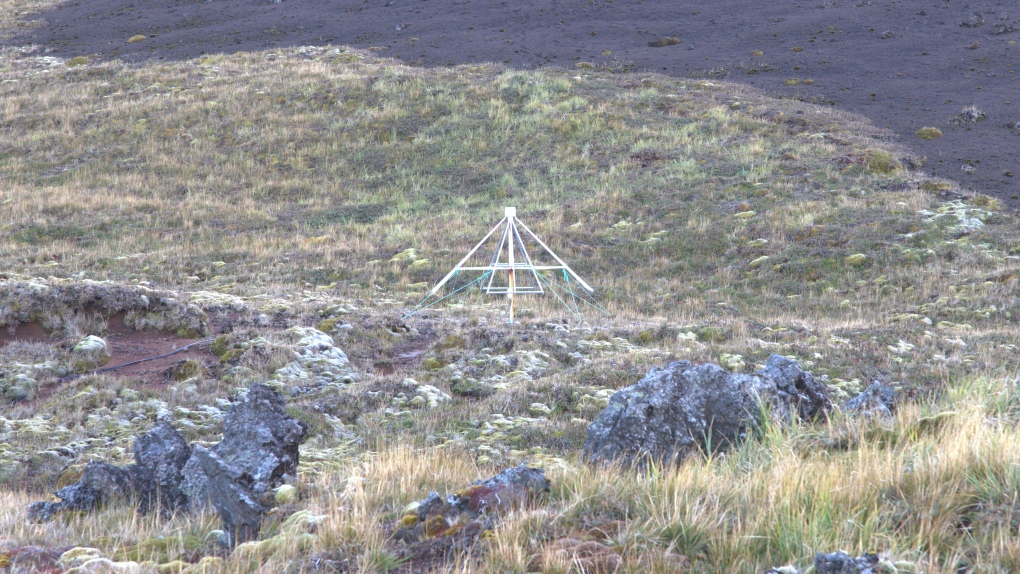 A piece of equipment on Marion Island used by the McGill Radio Lab to study the early universe. (Tristan Menard/Mohan Agrawal)
A piece of equipment on Marion Island used by the McGill Radio Lab to study the early universe. (Tristan Menard/Mohan Agrawal)
Chiang's crew of student researchers at the McGill Radio Lab last made the trek to Marion Island in April. Using radio telescopes, they measured signals from the early days of the universe, before and after those first stars appeared -- the so-called "dark age" and "cosmic dawn."
"We look for light coming from the first stars that were born in the universe. So this light is stretched out, so that when receive it on Earth, it appears as radio waves," Chiang explained.
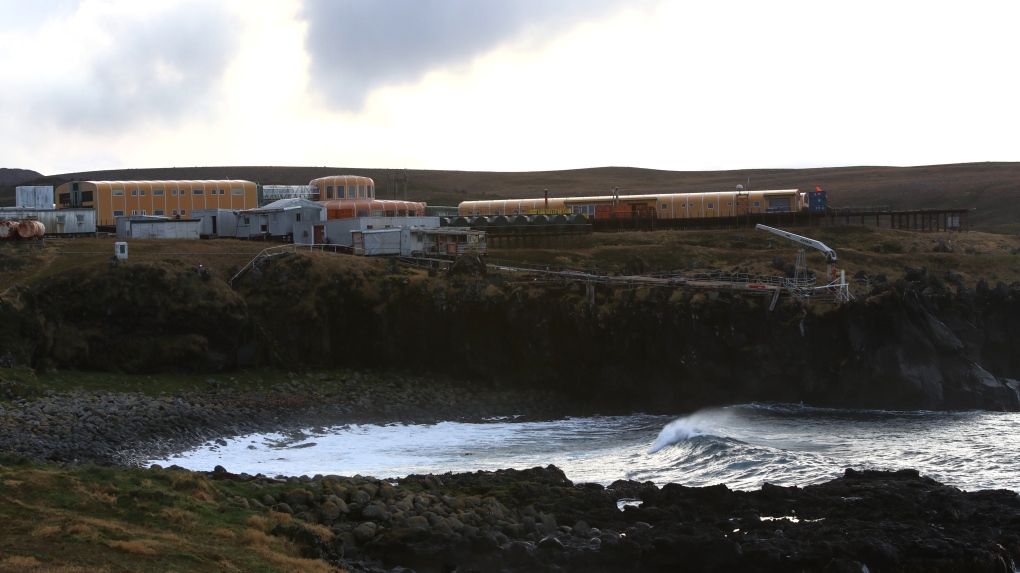 The researcher headquarters on Marion Island, one of the few structures to be built on the land. (Tristan Menard/Mohan Agrawal)
The researcher headquarters on Marion Island, one of the few structures to be built on the land. (Tristan Menard/Mohan Agrawal)
But Marion Island is not your average research lab or observatory.
There are no roads among the hills, beaches, bogs and caves that cover its surface. Scientists navigate the unforgiving terrain on foot, walking sticks in hand and Go Pros strapped to their foreheads.
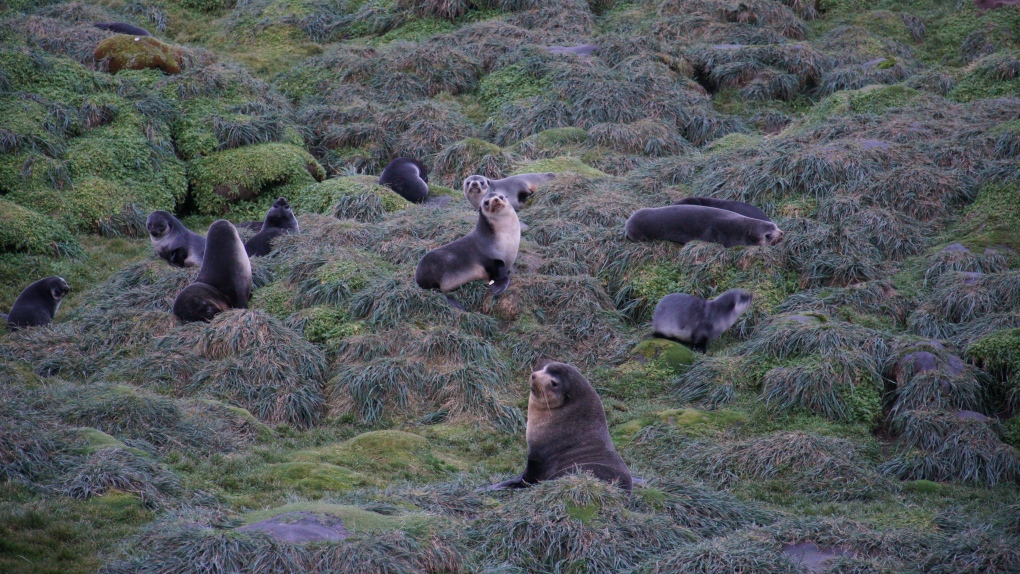 Seals congregate on the mossy hills of Marion Island. (Tristan Menard/Mohan Agrawal)
Seals congregate on the mossy hills of Marion Island. (Tristan Menard/Mohan Agrawal)
"You have to hike through all these valleys and mountains," recalled research assistant Mohan Agrawal, who describes the landscape as a "mire Hell."
Mires are stretches of wet, mushy ground prone to suctioning off the boots of unlucky travellers. Like quicksand, it's easy to become stuck in them -- a lesson Agrawal learned the hard way.
"There are bogs and mires that will consume you, like, literally consume you. I think the worst that I had it, I was stuck all the way to my thigh. And my height is six feet -- so being stuck all the way to my thigh was not fun," he said.
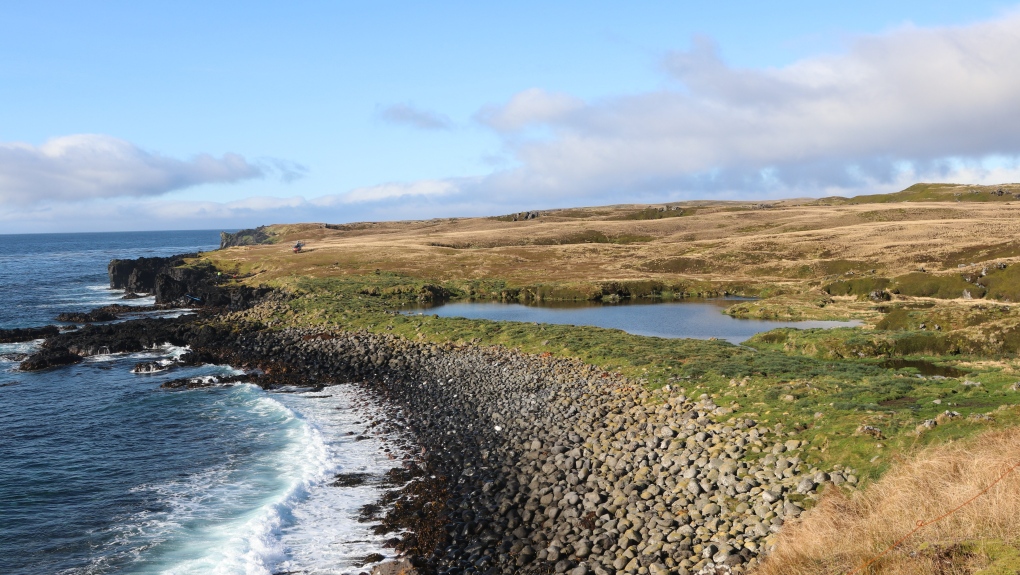 The rocky, soggy shores of Marion Island. (Tristan Menard/Mohan Agrawal)
The rocky, soggy shores of Marion Island. (Tristan Menard/Mohan Agrawal)
Marion Island is a protected site. For the most part, its ecosystem has evaded the destruction humans tend to bring about (except for that time 19th-century whalers and sealers introduced mice to the territory, which terrorize the island's seabird population to this day).
It's a rare site where non-human animals reign.
"It does feel like this eerily similar but different place, for sure," said research assistant Tristan Menard. "And then the wildlife is just out of this world."
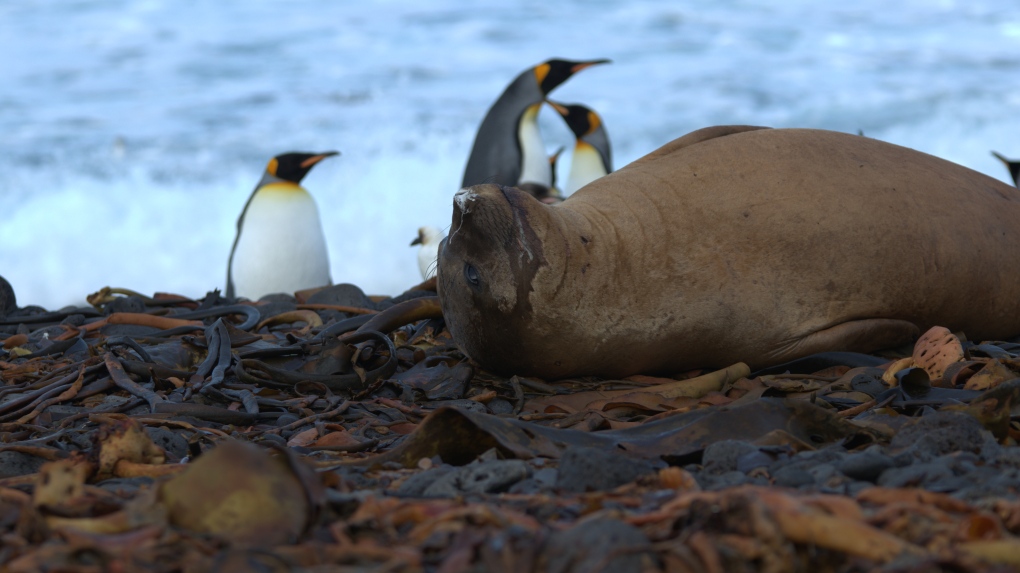 An elephant seal lounges on the shores of Marion Island, backed by a waddle of penguins. (Tristan Menard/Mohan Agrawal)
An elephant seal lounges on the shores of Marion Island, backed by a waddle of penguins. (Tristan Menard/Mohan Agrawal)
A colony of penguins; a cave full of seals; nest upon nest of albatross chicks -- it's not something Menard and Agrawal expected to encounter all that much when they signed on to the astronomy world.
"My first time hearing about any of this type of stuff was when I was first applying for grad school. I was talking with Cynthia [Chiang], and she told me, 'Oh yeah, there's projects going on in the Arctic, there's projects going on this place called Marion Island,' and my eyes just kind of lit up," Menard recounted. "I was like, 'Okay, this sounds pretty good.' And so I was really just interested in that, it caught my eye, and I ended up here."
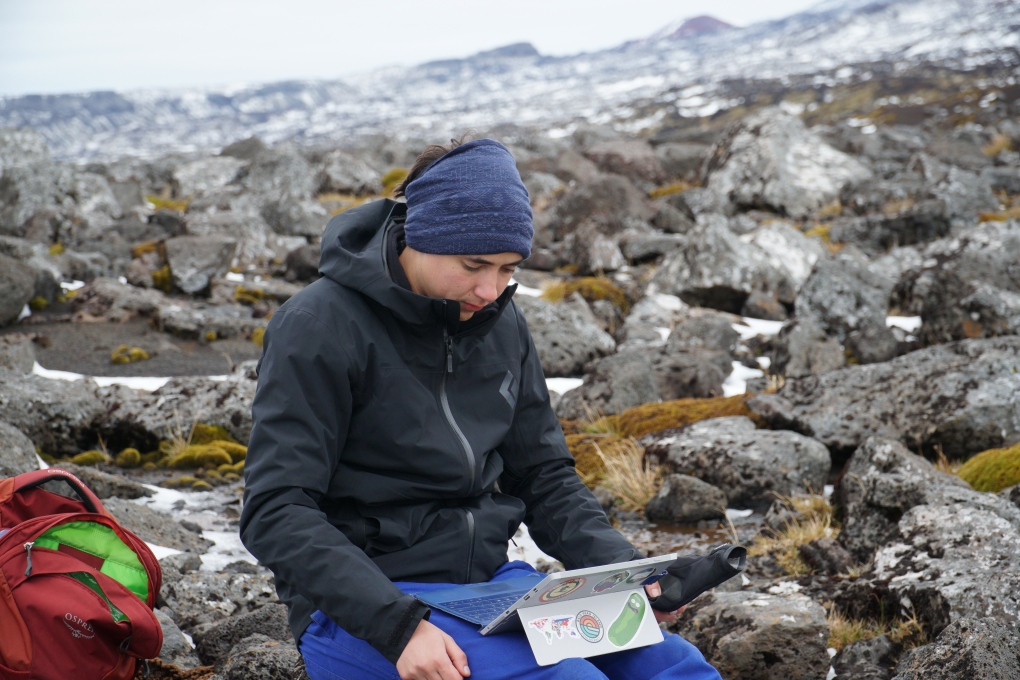 Astronomy researcher Tristan Menard takes notes on Marion Island's rocks. (Tristan Menard/Mohan Agrawal)
Astronomy researcher Tristan Menard takes notes on Marion Island's rocks. (Tristan Menard/Mohan Agrawal)
It's all in the name of science, after all -- and in the spirit of adventure.
"I think that it's an incredibly useful experience. Because, you know, going to these remote places, as fun as it sounds, it's also quite difficult," said Agrawal. "It's a great perspective-building experience."
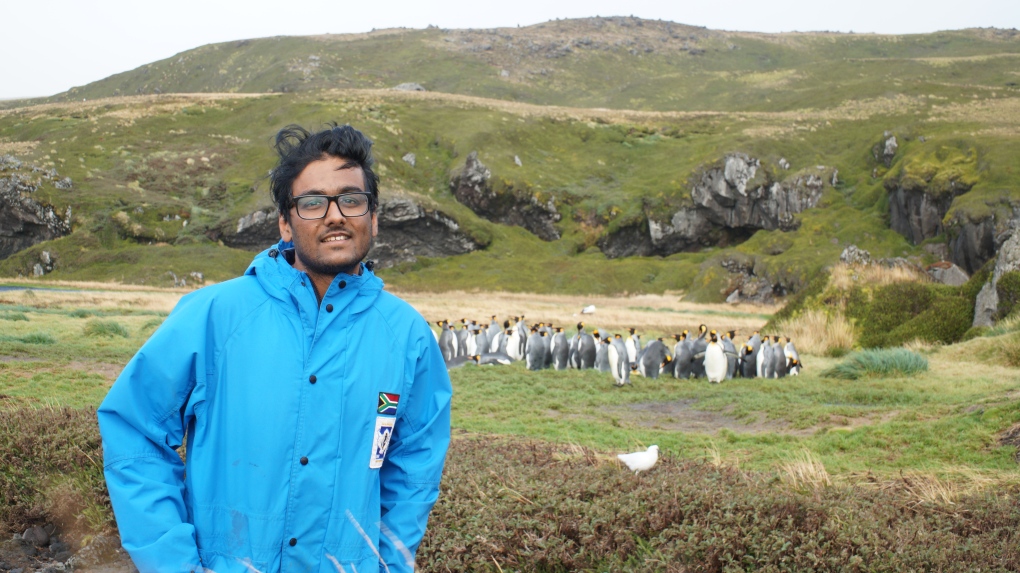 Astronomy researcher Mohan Agrawal poses with penguins. (Tristan Menard/Mohan Agrawal)
Astronomy researcher Mohan Agrawal poses with penguins. (Tristan Menard/Mohan Agrawal)
The McGill Radio Lab's experiments on Marion Island, called PRIZM and ALBATROS, were conducted in partnership with University of KwaZulu-Natal in South Africa.
CTVNews.ca Top Stories

Prime Minister Trudeau meets Donald Trump at Mar-a-Lago
Prime Minister Justin Trudeau landed in West Palm Beach, Fla., on Friday evening to meet with U.S.-president elect Donald Trump at Mar-a-Lago, sources confirm to CTV News.
'Mayday! Mayday! Mayday!': Details emerge in Boeing 737 incident at Montreal airport
New details suggest that there were communication issues between the pilots of a charter flight and the control tower at Montreal's Mirabel airport when a Boeing 737 made an emergency landing on Wednesday.
Hit man offered $100,000 to kill Montreal crime reporter covering his trial
Political leaders and press freedom groups on Friday were left shell-shocked after Montreal news outlet La Presse revealed that a hit man had offered $100,000 to have one of its crime reporters assassinated.
Questrade lays off undisclosed number of employees
Questrade Financial Group Inc. says it has laid off an undisclosed number of employees to better fit its business strategy.
Cucumbers sold in Ontario, other provinces recalled over possible salmonella contamination
A U.S. company is recalling cucumbers sold in Ontario and other Canadian provinces due to possible salmonella contamination.
Billboard apologizes to Taylor Swift for video snafu
Billboard put together a video of some of Swift's achievements and used a clip from Kanye West's music video for the song 'Famous.'
Musk joins Trump and family for Thanksgiving at Mar-a-Lago
Elon Musk had a seat at the family table for Thanksgiving dinner at Mar-a-Lago, joining President-elect Donald Trump, Melania Trump and their 18-year-old son.
John Herdman resigns as head coach of Toronto FC
John Herdman, embroiled in the drone-spying scandal that has dogged Canada Soccer, has resigned as coach of Toronto FC.
Weekend weather: Parts of Canada could see up to 50 centimetres of snow, wind chills of -40
Winter is less than a month away, but parts of Canada are already projected to see winter-like weather.

































